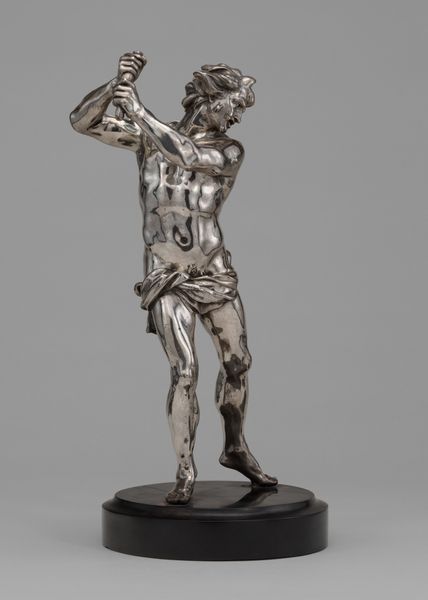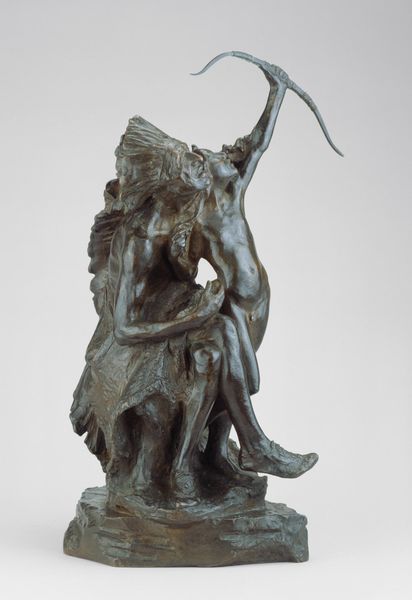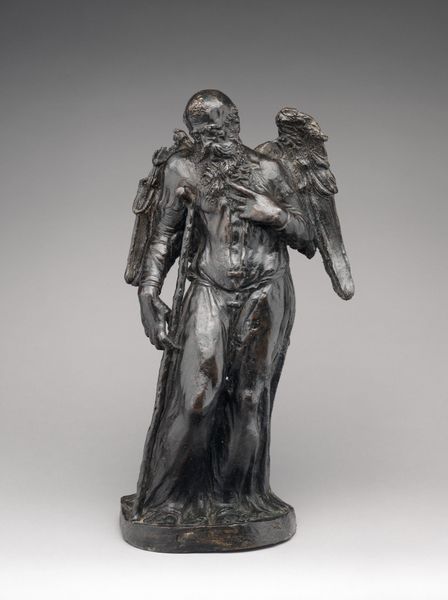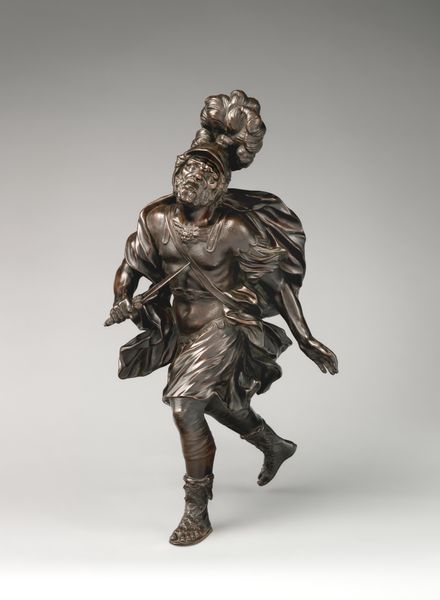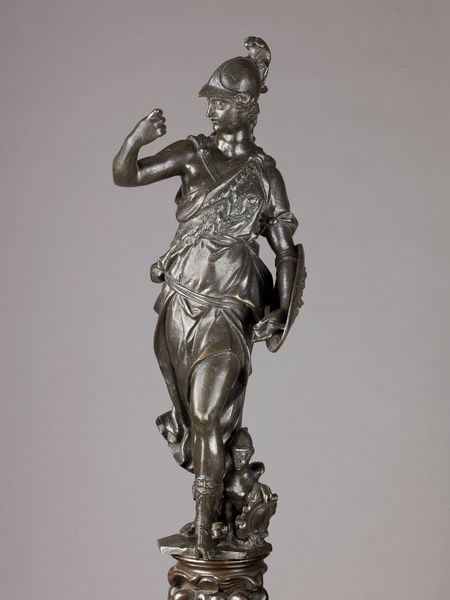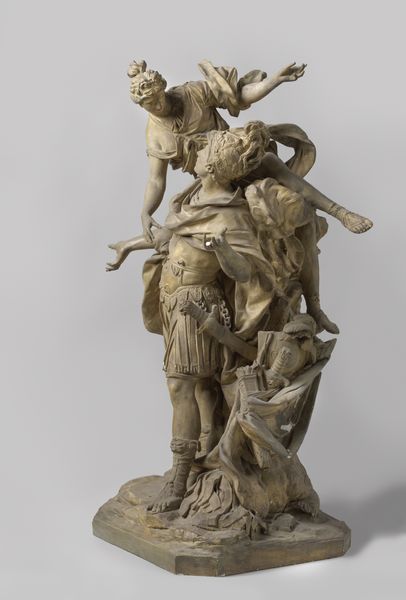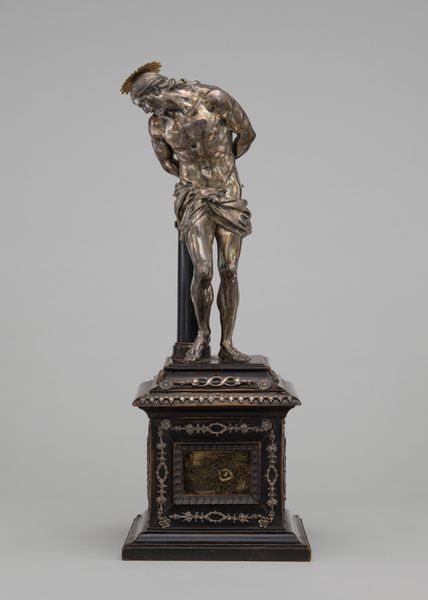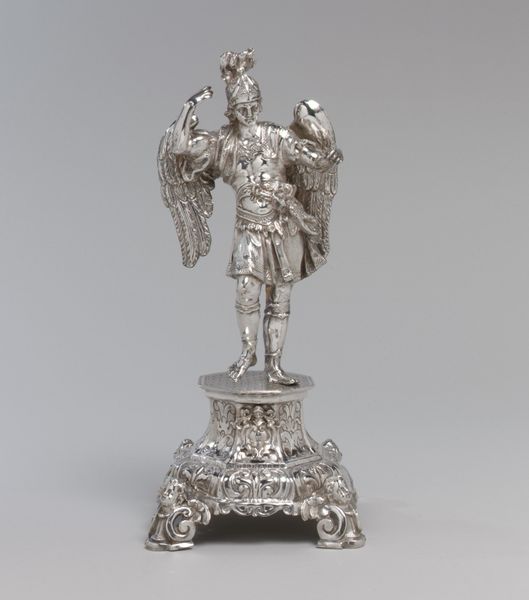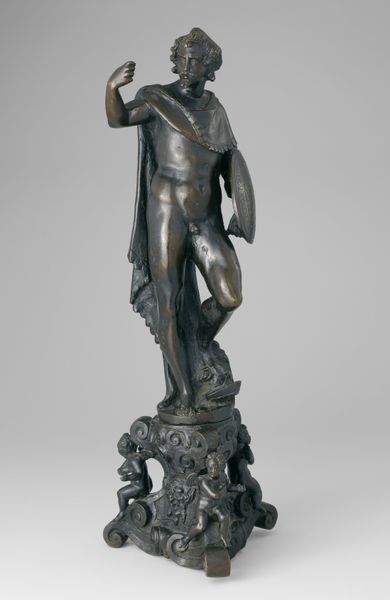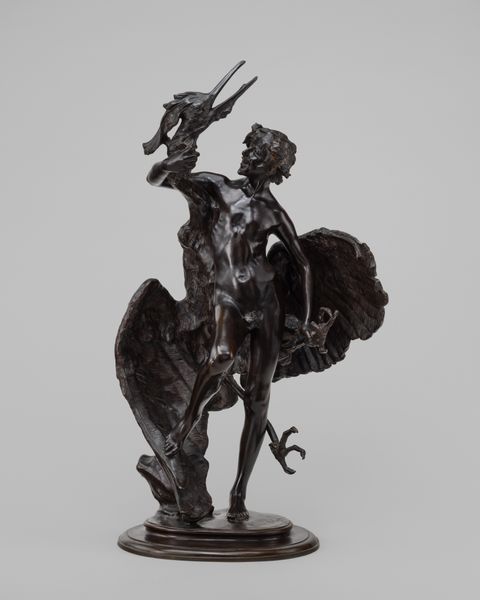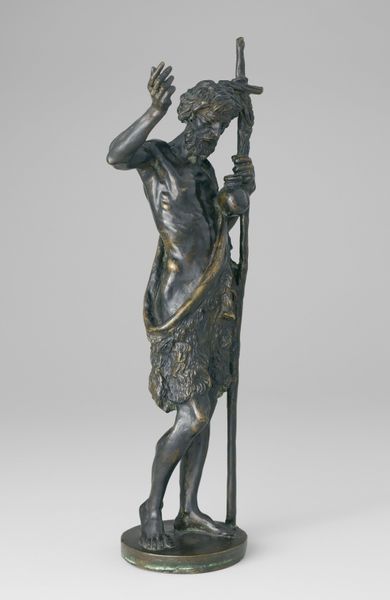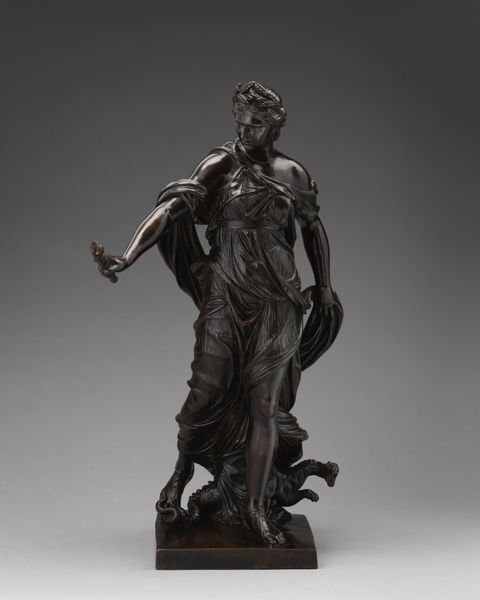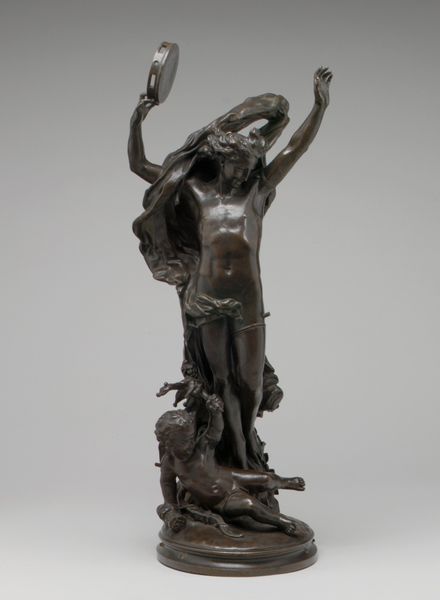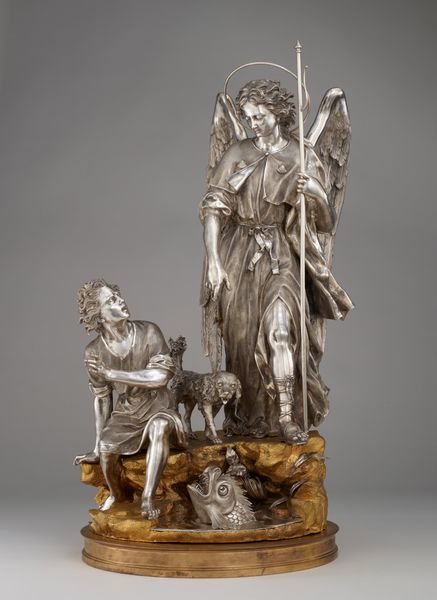
Dimensions: 33 1/2 × 13 7/8 × 13 5/16 in. (85.09 × 35.24 × 33.81 cm)
Copyright: Public Domain
Editor: Here we have Giuseppe Sanmartino's "The Archangel Saint Michael in Triumph," circa 1780. It’s silver sculpture, quite striking in its dynamism. It feels frozen in a moment of intense action. How do you interpret this work? Curator: Consider how Saint Michael, as a visual symbol, acts as a cultural anchor. He embodies the triumph of good over evil, a narrative deeply embedded in the collective consciousness. What do you observe about the devil’s depiction here? Editor: The devil looks... kind of like a dog. Almost pathetic, rather than terrifying. Is that a common way to portray evil? Curator: It's fascinating, isn’t it? By depicting evil in a diminished, almost animalistic form, the artist underscores the absolute power of good. This imagery serves not just a religious purpose but reinforces a specific social order. What psychological impact might this have on the viewer? Editor: I guess seeing evil as weak makes the viewer feel more secure in their own beliefs, in the triumph of righteousness. But does that simplify complex realities? Curator: Indeed! Iconography can both reflect and shape societal views. Sanmartino utilizes the familiar trope to solidify existing values. The raised sword and dynamic pose symbolize divine intervention but also power structures. The cultural memory of this symbol provides a framework to interpret one's place in the world, doesn't it? Editor: So the sculpture isn’t just a depiction, but a cultural statement. I never considered the power of images in reinforcing beliefs like that. Curator: Exactly. Symbols act as keys unlocking collective understandings of self and the world. Now, how do you see this piece fitting within the Baroque style? Editor: Thinking about it, I can now see how the artist has leveraged the power of culturally recognizable iconography. Thank you for opening my eyes!
Comments
minneapolisinstituteofart about 2 years ago
⋮
The image of Saint Michael killing a dragon comes from the description of an epic battle between good and evil found in Revelation, the last book of the Christian Bible: “And war broke out in heaven; Michael and his angels fought against the dragon. . . . The great dragon was thrown down, that ancient serpent, who is called the Devil and Satan.” The inscription Quis ut deus (Who is like God') on the shield is a Latin translation of the saint’s Hebrew name, Mîkhā'ēl. Giuseppe Sanmartino was known for dramatic and technically complex depictions of religious subjects. For Saint Michael and Saint Raphael, he collaborated with silversmiths, who spent long hours polishing, punching, and chasing the expanses of metal. Chasing involves the use of hammers and punches to create sharper surface details and textures, as in the feathers of Saint Michael’s wings.
Join the conversation
Join millions of artists and users on Artera today and experience the ultimate creative platform.
